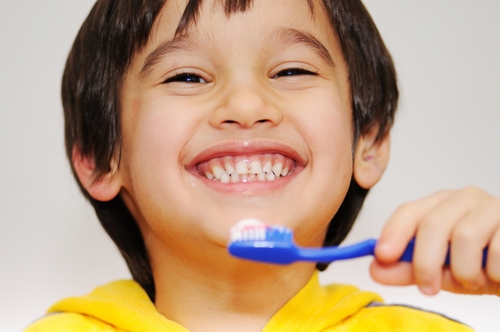The U.S. is undergoing a dental health crisis, according to the American Dental Association. Millions of Americans are failing to receive adequate dental care, including children. Furthermore, despite the Affordable Care Act’s apparent efforts to require dental coverage for all children, National Public Radio has reported that loopholes are allowing for children to miss out on coverage. Yet, whether families have insurance for their children or not, it doesn’t change the importance of preventive care and pediatric dental health. February is National Children’s Dental Health Month, which aims to raise awareness of children’s oral health and promote good dental habits at an early age.
Parents, teachers and businesses can all help the NCDHM campaign through a number of ways, not only by bringing dental issues to light, but also by instilling healthy habits in younger generations. While families can talk with their children, organizations may want to utilize promotional items as a way of encouraging kids to brush and floss more frequently.
The importance of hygiene
According to the Centers for Disease Control and Prevention, it’s important that children start cleaning their teeth at an early age. Poor dental hygiene can result in cavities, gum disease and even tooth loss for people of any age. For children specifically, untreated cavities could affect their education. The pain of untreated cavities could result in difficulty concentrating in school, increased absences and even poor self-esteem that results from yellowed or missing teeth. The results of poor oral hygiene, if untreated, could burden children for the rest of their lives.
The CDC recommended that children start cleaning their teeth as soon as they have them. Once their first tooth appears, parents should clean it daily with a damp cloth. A soft brush may be used once more teeth come in. After children reach the age of 2, parents should start using a small amount of toothpaste with fluoride. As they grow, children can start taking over their own brushing duties, initially under the supervision of adults to make sure they do a thorough job.
In addition to brushing and flossing, children should also visit the dentist regularly, according to the ADA, to make sure teeth are growing and cared for properly. Through a combination of preventive care and professional supervision, children may be able to maintain healthy teeth and a bright smile.
Getting the word out
Unfortunately, there is a stark divide in terms of dental care in the U.S. According to the ADA, middle- and higher-income families receive more thorough dental care than those with lower income. For example, approximately 48 percent of lower-income families haven’t seen a dentist in over a year, while only 30 percent of their more affluent peers do. When it comes to untreated cavities, twice as many lower-paid Americans have lived with one compared to those with higher salaries. Finally, 75 percent of those better paid Americans have a family dentist, significantly more than the 47 percent of those Americans with a smaller income.
While it seems that all ages of Americans stand to benefit from improved dental coverage, the NCDHM campaign is tackling the issue of children’s health by working with dental professional and health care providers to raise awareness. Anyone, however, has the opportunity to contribute. The ADA’s website provides a series of posters, presentations, children’s activities and games to get kids excited about dental health.
Parents are already in a prime position to discuss oral hygiene with kids, but businesses can help too by hanging up posters, hosting dental hygiene awareness events and even handing out special promo items in conjunction with the NCDHM campaign. The ADA also has tips for creating press releases as well as a list of suitable community outlets and broadcasting advice.

